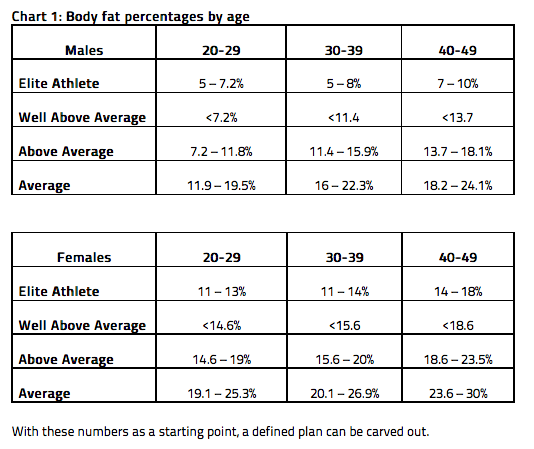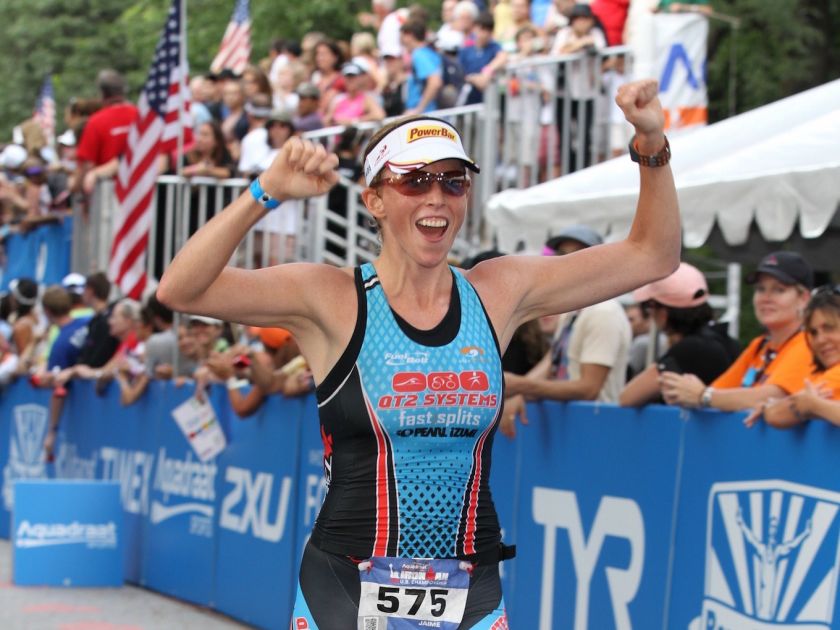The following content was provided by Registered Dietitian, Jaime Windrow.
Originally posted on Ironman.com 7/1/14
Many athletes who come to work with me have a similar goal: Finding out their ideal race weight and the best way to get there. Optimal race weight, however, can only be determined by peeling back the layers that make up the whole athlete. These not only include the individual athlete's body composition, age, gender, competition level and length of races, but their emotional relationship with food, any previous patterns of disordered eating, weight loss/gain history, level of commitment and sacrifice, to name a few. For simplicity's sake, this article focuses solely on the numbers.
How to determine optimal race weight
The first step is determining your goals. In my practice, I define "race weight" as an athlete's scale weight when they have achieved optimal body fat. Taking it a step further, this is also the weight the athlete clocks in at at optimal lean BMI. (In triathlon, we use the number 21 for males, and 20 for females at optimal body fat.)
In order to do this, you must have an accurate body fat test done. This will reveal how much lean muscle mass versus body fat you currently have. While a scale that measures body fat can be a good tool for tracking trends, it does not accurately measure how much body fat you have on your body today. Even a simple test using calipers will do the trick. A good tip is to always have the same person measure you when repeat tests are performed in order to maintain consistency.
Once an athlete has accurate body composition data, we use the chart below to determine their optimal short-term body fat percentage goal. Remember though, that this specific, "optimal" body fat percentage may not be ideal for a particular athlete. As mentioned earlier, there are many factors above and beyond the numbers that play into this, and is best assessed with a professional's help.


The above time frame applies to athletes who don't need to lose more than 12 pounds to reach their optimal body fat composition for race day. After the previous season has ended, we recommended putting on some weight to let the athlete recover from a long training cycle/season. This is the athlete who successfully achieved their race weight goal and needs to recovery fully after a long season of racing.
As the next season ramps up, the extra weight the athlete is carrying around will actually help create an anabolic atmosphere during the aerobic and strength sessions that make up the base phase. Weight loss strategies generally will not begin during this period. (If the athlete has more than 12 pounds to lose to reach race weight, weight loss strategies will begin immediately during the base phase.)
Weight loss strategy: Base phase
As mentioned above, when it comes to weight, athletes will fit into one of the following models:
Athlete A:within 12 pounds of race weight at 16 weeks out from race day.
Athlete B:more than 12 pounds to lose to reach optimal race weight at any time during the year.
Here is a quick glimpse at what the average numbers look like in the base phase of training from a nutrition intake point of view:

*Overall calorie goals are determined by training volume
Athlete A:Aim is to train through the base phase without focusing on weight loss.
Athlete B:Since there are no intense workouts to recover from during the base phase and the training volume is generally moderate, the calorie deficit will not impact the quality of the workouts. Research has shown that individuals are more successful with weight loss if protein intakes remain at, or higher than, "normal" levels during periods of calorie deficit.
The best approach for both athletes is to consume grains or grain-like foods just prior, during or immediately following workouts. The rest of the time, the focus should be on nutrient-dense foods like lean proteins, fruits, vegetables, healthy fats and high-quality dairy. Athlete B will create a calorie deficit (as indicated in Chart 3) to target a one-pound loss per week—mostly by removing any post-workout grains.
Weight loss strategy: 12 weeks (3 months) from race day
Most athletes coming out of the base phase will be about five to eight pounds from race weight.
Athlete A:We recommend losing a half to three-quarters of a pound per week, easily achieved by beginning to follow the "whole grain window," where whole grains are eaten only following long or key workouts, and continuing to eat "clean" throughout the day.
Athlete B:If this athlete is not within eight pounds of race weight, they can continue to target one pound of weight loss per week. Grains should not be eaten in any of the post-workout windows, with the exception of the long weekend trainings sessions. The focus here should be whole grains and "clean" eating.
Weight loss strategy: 6 weeks (1 month) from race day
The reason for being within two to four pounds of optimal race weight at this point in your training is so that you have just enough body fat to support your training load.
Athlete A:Cutting out grains all together and focusing on "clean" eating will do the trick for most athletes. If the weight starts to come off too fast (i.e. race weight is reached four weeks prior), the athlete should go back to eating whole grains in the post-workout window again. The training load during this period is very high and many athletes lose these last few pounds easily.
Athlete B:At this point if you are within two to four pounds you can follow the recommendations for Athlete A. If you have not achieved your goals, it’s time to re-adjust. You can continue to lose one pound per week—any loss greater than six pounds may negatively affect your training and race.
Takeaways
- Optimal race weight is just one piece of the performance puzzle. When it comes to weight loss, keep these key points in mind to ensure success.
- Never cut calories from your workout or recovery. This is your one chance throughout the day to restock muscle glycogen.
- Never nutritionally limit your training. For example, if you start to see a power loss on the bike, it might be an indication that the calorie deficit created is too much or there is a lack of training fuels.
- Weight loss plateaus can and will occur. Many times, a week of logging your food can help you get back on track.
- Weigh yourself only once per week. Your body weight will fluctuate from day to day.
- Get periodic body fat tests done by the same health professional.
~ Jaime Windrow RD CSSD LDN















Comments